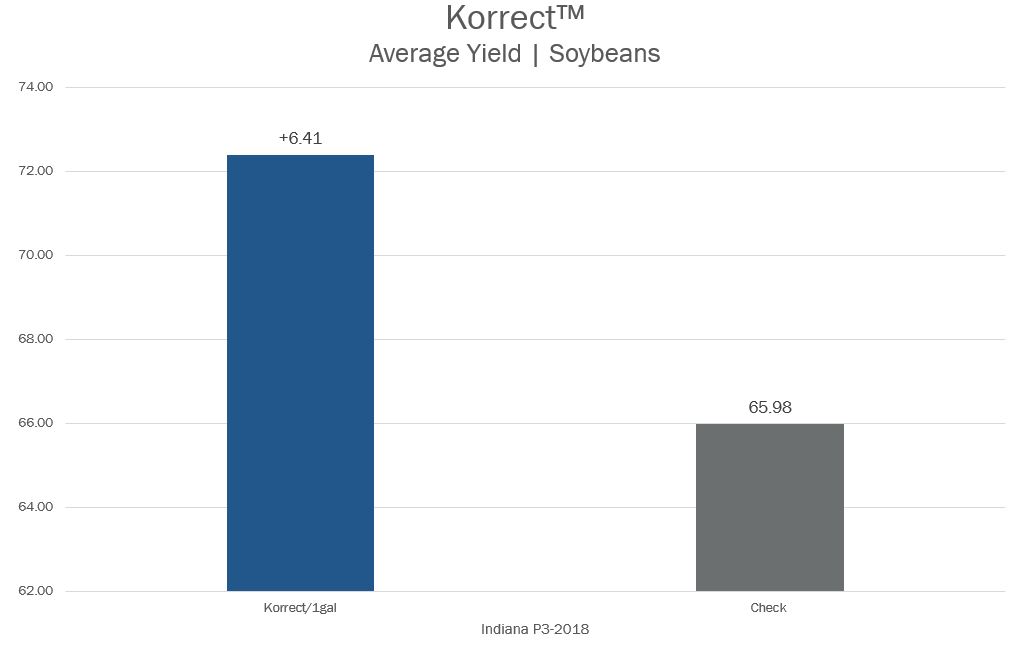Update from the Field: Accelerate Yields with Acetate
Posted by Dave Dyson, Agronomist on February 01, 2020

There has been a lot of talk lately around acetate fertilizers and the benefits that come with placing an acetate fertilizer near the root system. So, what are the benefits of an acetate-based fertilizer? You can think of the acetate portion of the fertilizer as electrolytes transporting vital nutrients throughout the plant. As shown in Figure 1, Texas A&M University researchers have shown the different absorption rates of potassium between the different forms of fertilizers, and potassium acetate showed the highest absorption percentage.
Figure 1: Department of Horticultural Sciences, Texas A&M University.
The Andersons has proven in our Walton test plot and third-party test plots that our Korrect™ and RGS® (Root Growth Stimulator), both acetate-based fertilizers, have increased yields consistently with low application rates.
I. C. Anderson, Professor of Agronomy at Iowa State University, wrote in a 1989 article about what he and his students observed. He applied anhydrous ammonia with zinc acetate at different spacings from the seed. The greatest increase in yield and root mass was when the zinc acetate was applied close to the seed and as near planting as possible, Figure 2.
Figure 2: Dr. Anderson shows in this study the closer you can apply zinc acetate to both the planting date and to the seed, the greater the yield advantage. Date planted is weeks after zinc acetate and anhydrous ammonia band had been placed so it would be “near” the row of corn or “between” the 30-inch corn rows.
https://pdfs.semanticscholar.org/9a92/24cf786380d581b68d6f4cd03681f2a6bd0b.pdf
In the article, Dr. Anderson was quoted, “During the following winter I grew corn seedlings in sand and found larger root systems on treated plants and recently a post-doctoral researcher did the same and found larger root systems.” In the Iowa State research project, Professor Anderson showed an increase in yield by as much as 31 bu/ac.
For the last two years, our potassium acetate product called Korrect has been tested at the soybean test plot near Walton, Indiana, and the results have been favorable. We saw a 6.41 bu/ac increase in 2018 and 3.44 bu/ac increase in 2019, Figures 3 and 4.

Figure 3 and 4: Trials conducted in Walton, Indiana in 2018 and 2019, testing Korrect at a rate of 1gal/acre in-furrow on soybeans.
With a cost of less than 1 soybean bushel, this product is a no-brainer. The Andersons also carries a zinc acetate product called RGS, Figure 5.
Figure 5: RGS is a zinc acetate that should be placed in a high poly starter close to the seed.
This product is designed to be positioned with a 2x2 starter. RGS was tested in 2018 at our Wisconsin corn test plots and increased corn yields by 19.7 bu/ac. RGS was tested again in 2019 at our Nebraska corn test plots and increased yields by 20.41 bu/ac.
In conclusion, placing a high acetate product like Korrect or RGS close to the seed by way of a starter carrier will increase acetate in the plant.
FOR MORE INFORMATION:
Please complete the form, and we’ll get you in touch with your Territory Manager from The Andersons.

Dave Dyson is a regional agronomist for The Andersons’ Farm Centers which are located throughout Ohio, Michigan, and Indiana. He is an Indiana native and grew up on a dairy farm in Miami County. A graduate of Purdue University with a degree in Crop & Soil Science, Dave has a deep knowledge of various agronomic topics and is committed to helping growers improve their crops. If you have any questions, Dave can be reached at david_dyson@andersonsinc.com.
© 2020 The Andersons, Inc. All Rights Reserved. Korrect is a registered trademark of The Andersons, Inc. RGS is a trademark of The Andersons, Inc.






